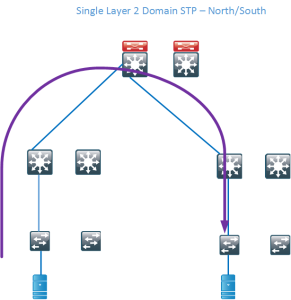Featured Article — DevOps: A Huge Cultural Shift for Telecom
 The DevOps model is coming to telecom. The only question is: how long it will take?
The DevOps model is coming to telecom. The only question is: how long it will take?
Last Call! Sign Up Now For the 6WIND NFV Performance DemoFriday!
 Have you signed up yet for the 6WIND DemoFriday? No? Better hurry... today is your last chance!
Have you signed up yet for the 6WIND DemoFriday? No? Better hurry... today is your last chance!
Blessay: Linux on Network Switches Makes Sense. For Your Career
Why do you want Linux on a network switch ? Mostly its about enhancing your career.
The post Blessay: Linux on Network Switches Makes Sense. For Your Career appeared first on EtherealMind.
Design Considerations for North/South Flows in the Data Center
Traditional data centers have been built by using standard switches and running Spanning Tree (STP). STP blocks redundant links and builds a loop-free tree which is rooted at the STP root. This kind of topology wastes a lot of links which means that there is a decrease in bisectional bandwidth in the network. A traditional design may look like below where the blocking links have been marked with red color.
If we then remove the blocked links, the tree topology becomes very clear and you can see that there is only a single path between the servers. This wastes a lot of bandwidth and does not provide enough bisectional bandwidth. Bisectional bandwidth is the bandwidth that is available from the left half of the network to the right half of the network.
The traffic flow is highlighted below.
Technologies like FabricPath (FP) or TRILL can overcome these limitations by running ISIS and building loop-free topologies but not blocking any links. They can also take advantage of Equal Cost Multi Path (ECMP) paths to provide load sharing without doing any complex VLAN manipulations like with STP. A leaf and spine design is most commonly used to provide for a high amount Continue reading
Avago Puts Up $37B to Acquire Comms Giant Broadcom
 A chip powerhouse is in the making, as brash, independent Broadcom has accepted a deal to join forces with Avago.
A chip powerhouse is in the making, as brash, independent Broadcom has accepted a deal to join forces with Avago.
PQ 50 – Network Service Header (NSH) Deep Dive & Use Cases
On this Packet Pushers Priority Queue episode, we chat with Cisco's Jim Guichard & Paul Quinn about the topic of Network Service Header (NSH). What is NSH meant to be? What might we use NSH for? What will it take to make NSH a widely adopted reality? This is a follow up to Show 238, where Greg was not feeling the NSH magic. The plan was to show Greg the light. Did Jim & Paul succeed?
Author information
The post PQ 50 – Network Service Header (NSH) Deep Dive & Use Cases appeared first on Packet Pushers Podcast and was written by Ethan Banks.
#AnsibleFest NYC 2015 – Speaker Lineup

We’re proud to announce some of the speaker lineup for AnsibleFest NYC. AnsibleFest is a day-long conference bringing together hundreds of Ansible users, developers and industry partners to share best-practices, case studies and Ansible news.
Check out our line up of some of the sessions.
AnsibleFest is next Thursday, June 4th in NYC.
Register today as space is very limited.
Ansible v2, James Cammarata, Director of Engineering
A walk through of some of the new features and benefits in the 2.0 release.
Bio:
James Cammarata is a Director of Engineering at Ansible. He is the lead developer of Ansible, and has worked on tools such as Ansible and Cobbler in the past.
Twitter @thejimic
Ansible Tower 2.2, Bill Nottingham, Director of Product, Ansible
Everyone knows about Ansible’s simple, agentless, and powerful automation. (At least, we assume that’s why you’re here.) But sometimes you need more in your organization - you want to be able to find out what happened with your playbook run last week. You want to delegate your rollouts to the dev team, so you don’t have to do it.
We’ll show how Ansible Tower adds control, security, and delegation around Ansible. Plus, we’ll Continue reading


